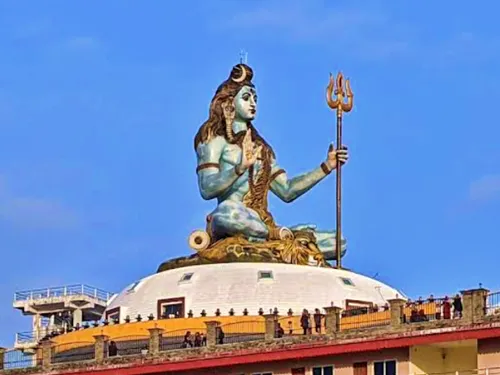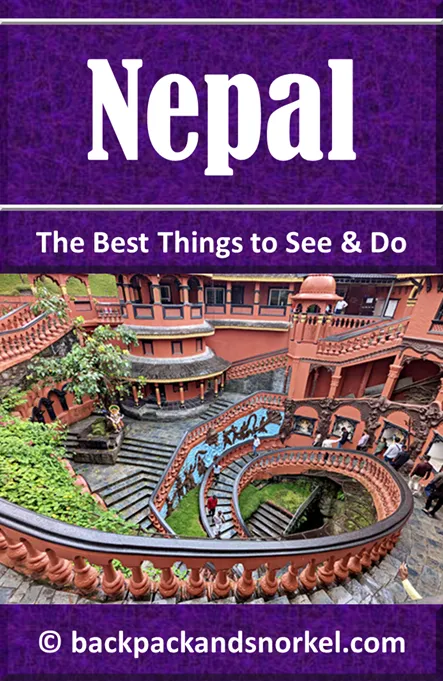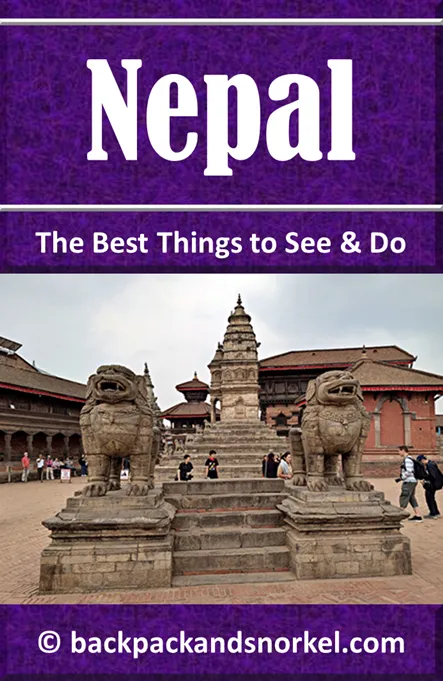Pumdikot Religious Area: Your Guide to Pokhara's Giant Shiva Statue - Nepal Purple Travel Guide
(map, reviews)
This is Premium Content! To access it, please download our
Backpack and Snorkel Purple Travel GuideThe name Pumdikot comes from the local village of Pumdi Bhumdi and the Nepali word kot, means fort or elevated place. This name reflects its strategic hilltop location, historically significant for its vantage point, and now spiritually significant as a place of devotion and peace.
The Shiva statue was finished in 2021, and it is located at an elevation of 4,900 ft (1500 m).
If you look down the hills to the east, you can see the World Peace Pagoda.




Spiritual Significance of the Pumdikot Religious Area
The spiritual significance of the Pumdikot Religious Area lies primarily in its dedication to Lord Shiva, one of the principal deities in Hinduism.
Here's a breakdown of its deeper meaning:
Lord Shiva as the Central Figure
The massive Shiva statue at Pumdikot symbolizes divine power, destruction of ego, and cosmic balance. In Hindu belief, Shiva is the destroyer and transformer, reminding devotees of the impermanence of the material world and the importance of inner spiritual growth.Symbolic Architecture
The statue stands atop a 108-foot base, referencing the sacred number 108, which appears frequently in Hindu and Buddhist traditions (e.g., 108 beads in a mala, 108 energy lines in the body). This number is considered spiritually complete.Spiritual Journey and Pilgrimage
The location on a hilltop encourages a form of pilgrimage, echoing the tradition of seeking higher spiritual truth through physical ascent. The walk or drive up becomes symbolic of rising above worldly distractions toward spiritual clarity.Meditation and Prayer Space
The peaceful setting, with views of the Himalayas and sacred lakes, provides a perfect environment for contemplation, meditation, and prayer, helping visitors connect with nature and the divine simultaneously.Connection to Mount Kailash
The platform's shape resembles Mount Kailash, believed to be the mythical abode of Lord Shiva. This design deepens the site's symbolism as a spiritual axis or world center (axis mundi) in Hindu cosmology.
Admission
Admission is free.
As with World Peace Pagoda, you will need to take your shoes off to ascend the final stairs to the temple.
Back to your self-guided tour
Author: Rudy at Backpack and Snorkel
Bio: Owner of Backpack and Snorkel Travel Guides. We create in-depth guides to help you plan unforgettable vacations around the world.
Other popular Purple Travel Guides you may be interested in:
Like this Backpack and Snorkel Purple Travel Guide? Pin these for later:





